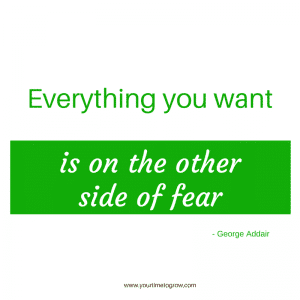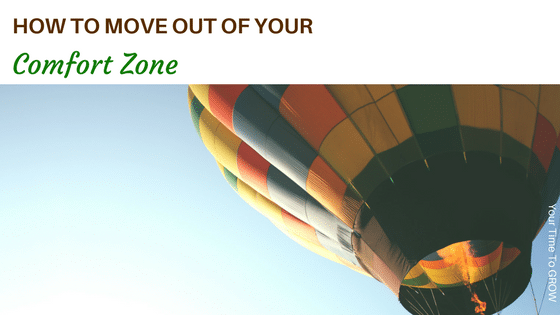Are you sitting comfortably? Good. Let me begin. This month I have been looking at giving yourself permission
to say yes and all that it entails – not least ‘the fear’. The reality is that saying yes, or even no, moves our comfort zone a little bit (or a lot) and this can be really scary but it’s necessary for success. Every situation gives us the opportunity to say yes and expand that comfort zone or to say no and stay stuck/contract it.
What is a comfort zone?
Our comfort zones are a space in which our behaviours fit into a routine/pattern that is ‘safe’ for us. It is designed to minimise our stress and risk and provides us with a feeling of security for our mental health. Within our comfort zone, we are generally happy, less stressed and have low anxiety. So why change it?
When I meet with clients I like to understand what it is they want to get out of working with me – this might take a few sessions – perhaps that’s why they have come, or it might be something they are very clear on to start with. Either way, there are usually some parts of the conversation that the client finds uncomfortable. When we talk about our hopes and dreams and create actions to achieve them, they move from being “I hope” to being “I will” and that can bring you smack bang into the reality of a situation – which is scary. By saying yes to the opportunities which present themselves to you, you need to be present and ready to react. You might see opportunities where you didn’t see them before – they may look (or feel) unattainable but as you move out of your comfort zone you realise that where you are now once looked out of your reach too.
Staying in our comfort zones feels familiar, safe, comfortable. In the short term we feel good but in the long term, it can make us more anxious and more prone to feeling like a failure (and that’s not true). So how do we move out of our comfort zone?
Face the fear
I know it sounds cliched (and it is) but it’s true. Fear is something programmed into us, hard-wired to protect us from the dangers around us..it is what triggers our fight, flight or freeze reflex. Many things that we fear aren’t applicable in the modern day (like a bear attacking our cave). I know people who are scared of success, failure, public speaking, spiders, heights, buttons, needles and 12% of the British population are frightened of clowns. So what? Well, many of our fears are learned…something I bear in mind when I see a spider…I am much braver since having my children (at least on the outside!). 
The thing is that unless you are in immediate danger e.g. trapped in a burning building, most fears are in your head. They don’t exist. Fear is a thought which impacts our feelings and therefore our behaviours. It doesn’t have to. Those thoughts and feelings have no idea what our bank balance looks like, our future earning potential, our capability to lead a team or get a new job. They can only tell us how we are feeling in that moment of time and more importantly, they are temporary. All feelings are – both positive and negative.
I often see it when a client acknowledges they are feeling afraid or negative about a situation in that moment, they ‘snap out of it’ and see more clearly the options available to them.
Slow down
Instead of projecting our ‘what if’ fears into the future or ruminating on that past I recommend mindfulness to press the stop button and slow down. I have talked before about techniques you can use to ground yourself and return the calm, allowing you to slow down and tackle the issue with confidence. Slow down, observe what’s going on, take your time to interpret what you see, and then intervene. By noticing the feelings or thoughts we are having we can sit with them, let them be. It’s ok to be anxious sometimes, it will pass and by accepting them we can see the value. Sometimes just defending your right to make an educated decision can push you out of your comfort zone. Think, don’t just react and you will find alternative options which you can group – ‘easy wins’, ‘might work’ and ‘not an option’. The ones which ‘might work’ are those which will stretch your comfort zone and teach you.
Write it down
Writing can be very cathartic and can provide a lot of insight. These five steps will help you work through your fears to see what your options are – try and do it instinctively, without too much thought or correction (shout out to my mentor and coaching buddy Jen for this technique):
- Write down all the ways you fear your limiting belief to be true e.g. I am going to lose my job because…
- Ask yourself: Is it true? Is it 100% true? What am I with this thought? What am I without this thought?
- Ask yourself if you want this to be true (challenge your limiting belief/fear)
- Write down actionable steps to take – give yourself a time frame.
- Create a mantra/affirmation/statement that works for you e.g. I am in control of my career path
Look for opportunities to make changes
 Whether you start small e.g. taking a different route to work or you go all out e.g. quitting your job to do the things you have always wanted, look for opportunities to make changes on a day to day basis. Look for a change of perspective, even if it is negative and don’t be put off if it doesn’t go to plan.
Whether you start small e.g. taking a different route to work or you go all out e.g. quitting your job to do the things you have always wanted, look for opportunities to make changes on a day to day basis. Look for a change of perspective, even if it is negative and don’t be put off if it doesn’t go to plan.
Trust your instincts
Underneath all that thinking and feeling is your inner wisdom/instincts/intuition (whatever you call it). The difference between fear and your intuition is that you will feel it in your body – the way you sit/stand..I get a pain in my left shoulder if I am stressed or fearful and that’s usually a sign not to do whatever it is I am thinking about. On the other hand if I feel calmer and at peace about your decisions albeit a little scared that’s a good sign – well, at least it is for me!


1 thought on “How to move out of your comfort zone”